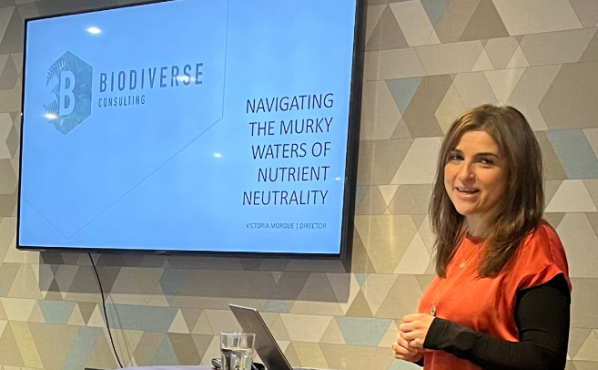
It’s been a rollercoaster of a year politically and many environmental policies have been up in the air or finally scheduled to come into force, such as biodiversity net gain (BNG) in 2023.
Another standout policy is ‘nutrient neutrality’, a brand new requirement from Natural England to protect our water reserves from pollution. It applies to a number of catchment areas across the nation, and a mitigation scheme for the Tees catchment has very recently been announced by the Government.
Despite the significant gains it presents for our natural world, nutrient neutrality is causing a great deal of confusion across the planning and development industry. We don’t like to see obstacles in the road of development, so we’re always looking for ways to strike a balance between business and nature. Below, you'll find 5 points that planners need to know now.
1. Specialist environmental considerations are only becoming more prevalent in the planning landscape
The planning landscape is becoming heavily saturated with new requirements and policies designed to allow development to continue while our environment is protected, and this is likely to continue into the future.
As we battle through the effects of climate change, planners will be forced to consider factors like the identification of flood risks and mitigation, nature conservation, urban green space, and the standard of an area’s air and water quality.
2. Some specialist considerations for planners are fundamentally in conflict
Unfortunately, implementing environmental considerations will not always be straightforward for planners.
Some specialist considerations are fundamentally in conflict. For example, soil quality considerations drive development to low-quality brownfield sites in the interest of soil conservation. However, the BNG requirement provides a high ecological value on brownfield sites with rare habitat types. Ultimately, planners need some clarity and coherence in planning policy to be able to prioritise environmental concerns throughout the planning process.
3. Public opinion matters, but it isn’t always what’s best.
While factors such as biodiversity, nutrient neutrality, and mineral security are important when considering a planning application, it is still public opinion that has the biggest impact on planning decisions.
The public demand for urban green space might outweigh the demand for spaces for habitat restoration, but this isn't always what’s best for biodiversity.
Often, green space and BNG sites are confused. Can’t both be a win for nature? Unfortunately, not. Urban green space in particular often incorporates manicured lawns and flower beds. Frequent mowing and pruning are likely to disturb any habitats that might flourish there, so it must be ensured that the best route for nature is followed.
4. Solar = future
Planners should prepare themselves to incorporate renewable energy sources into their development plans. Solar planning applications are coming forward at unprecedented rates in the North East, and this will only grow as we move away from traditional energy sources like oil and gas, which are more expensive and cause great harm environmentally.
5. Environmental Net Gain is the answer
Despite individual requirements like BNG and nutrient neutrality being pushed by officials as the answer to offsetting biodiversity loss, reaching net zero, and reducing pollution, in 2023, Biodiverse Consulting wants to move towards ‘Environmental Net Gain’.
This is an end-to-end solution for our natural world that will make environmentally sustainable development more simple, straightforward, and viable for planners.
We shouldn’t approach environmental gains as a number of separate steps but as one ultimate goal that will benefit us all.
